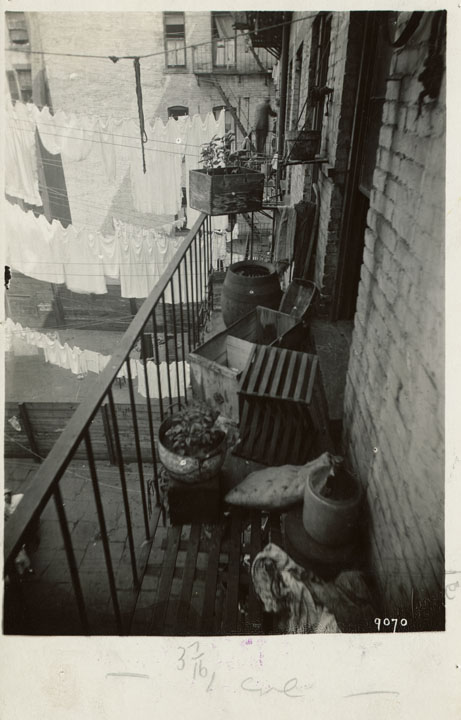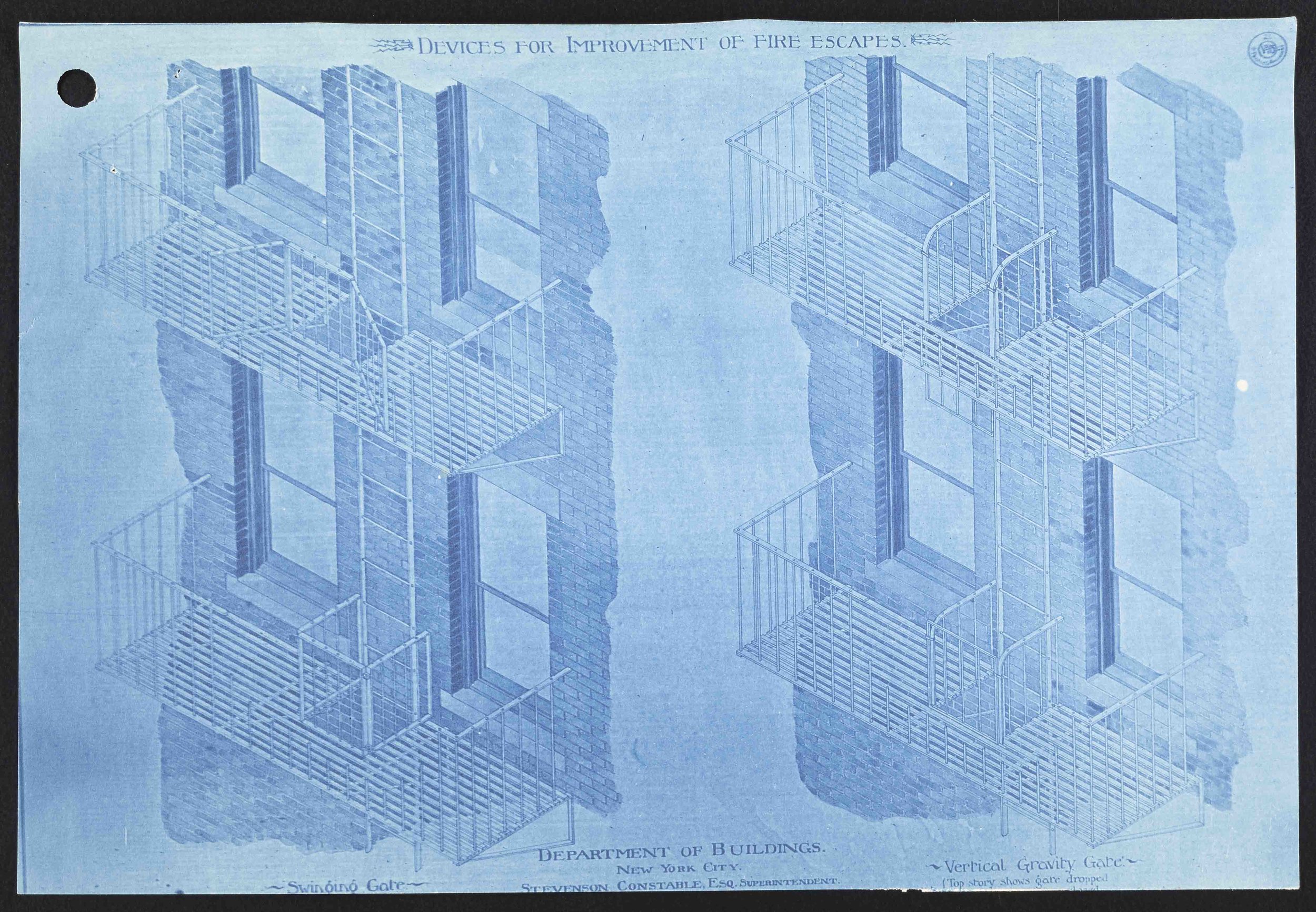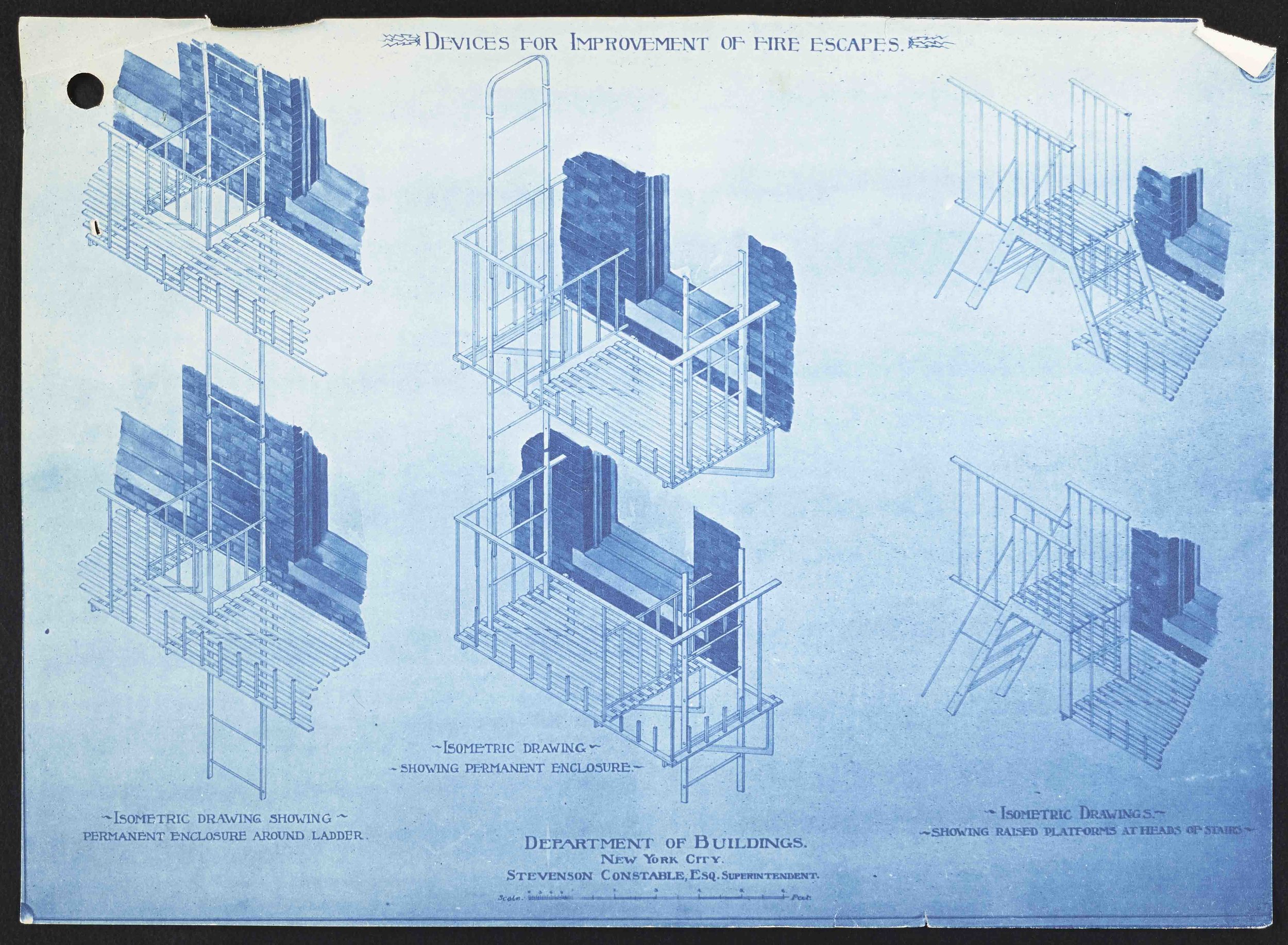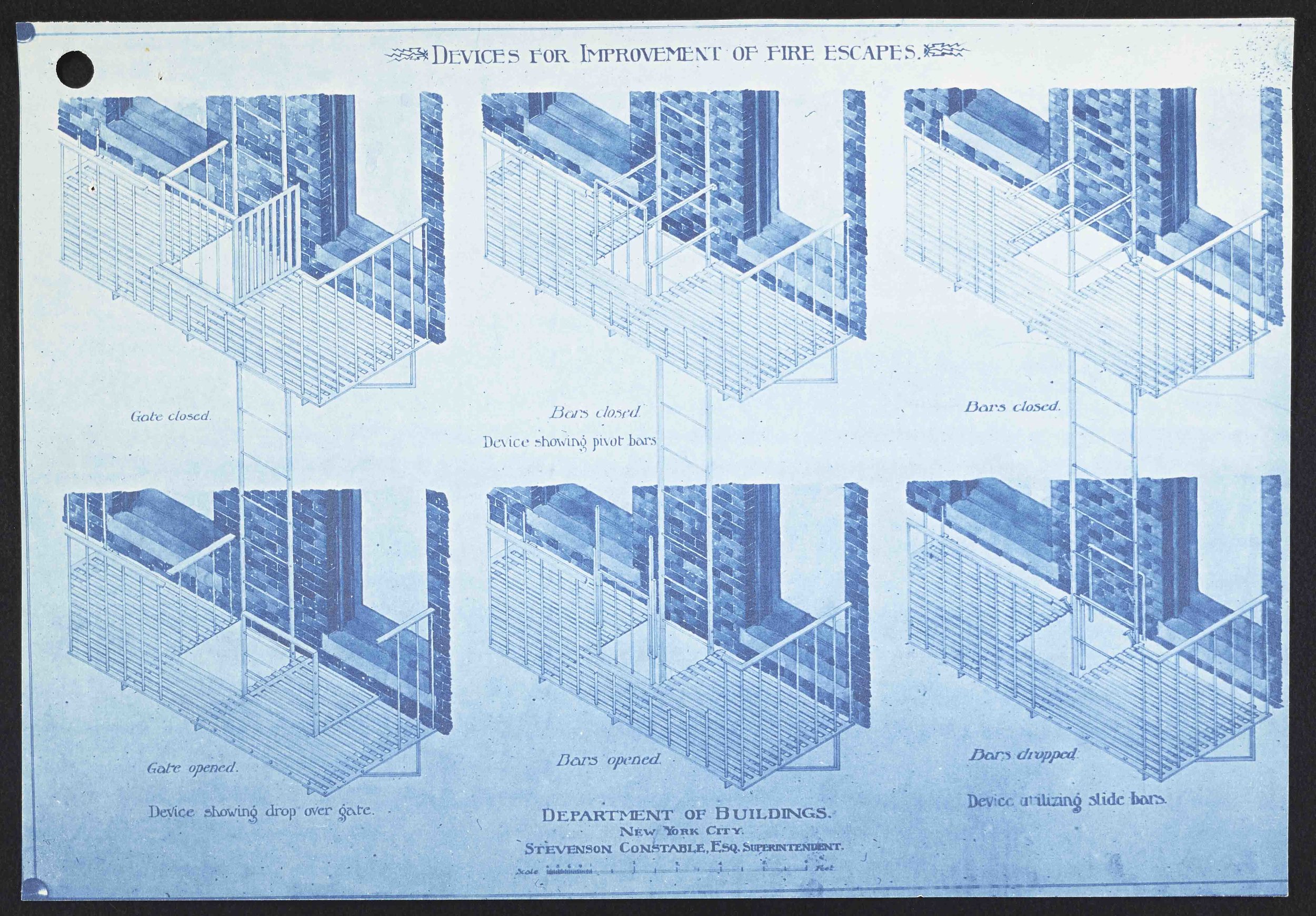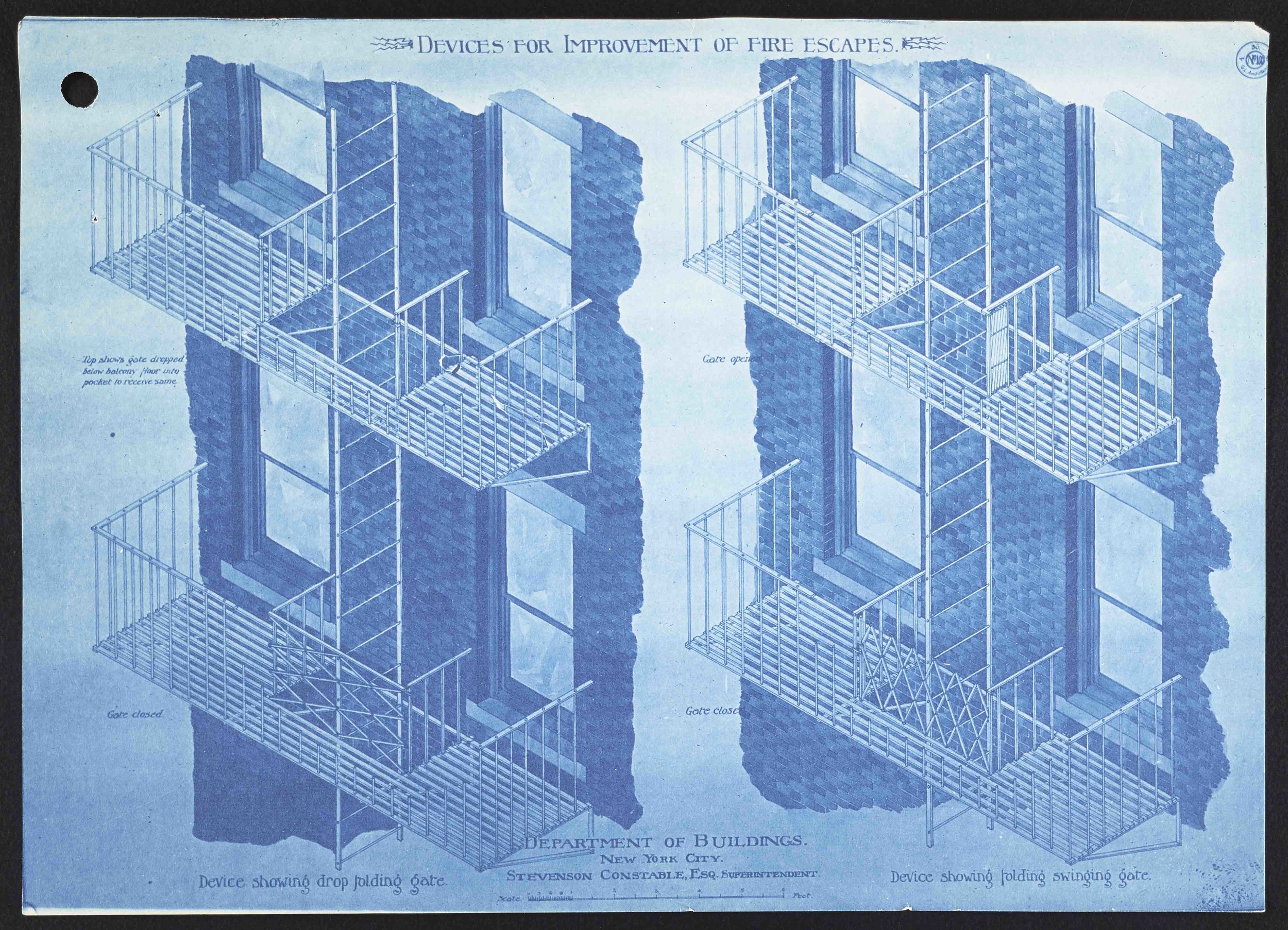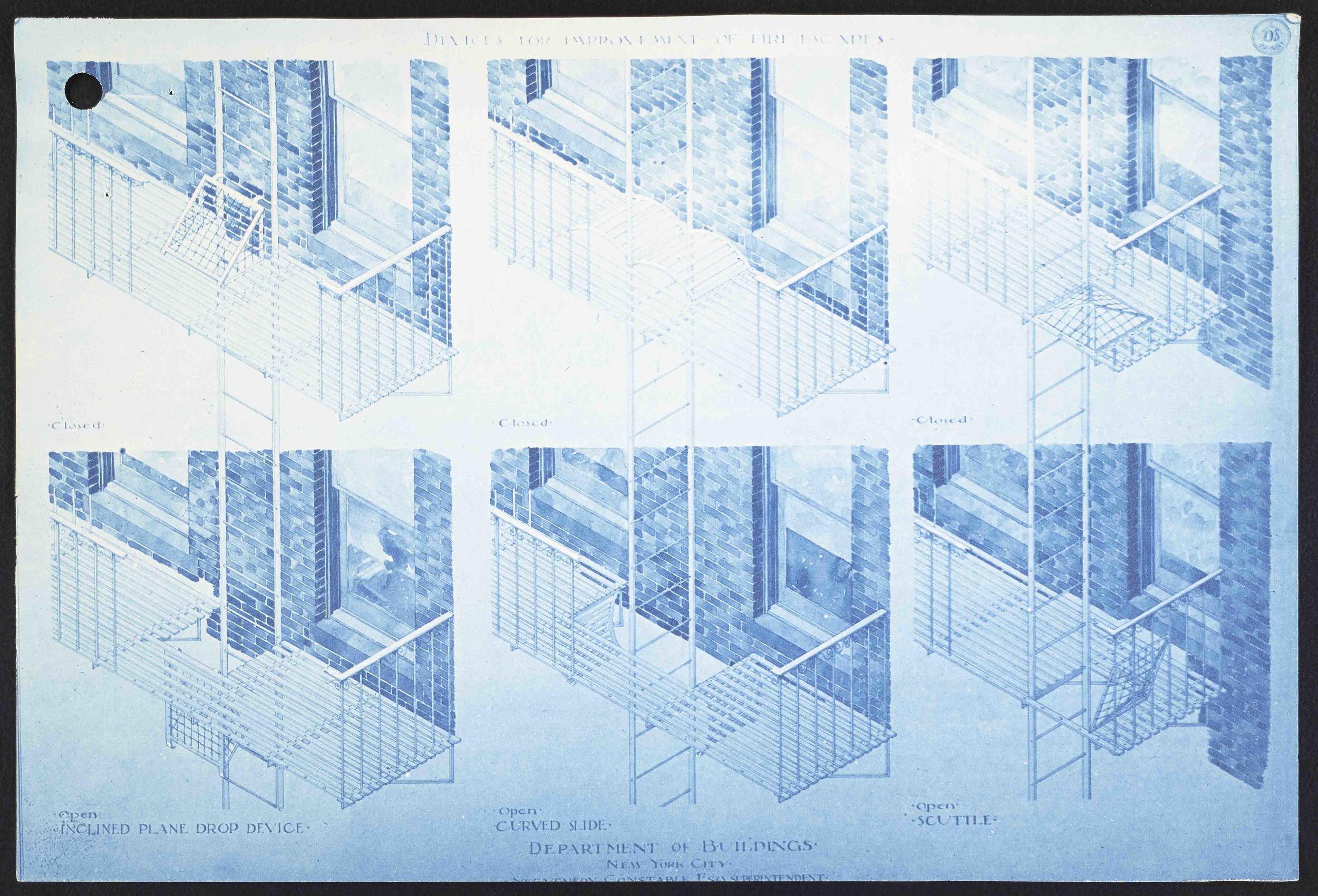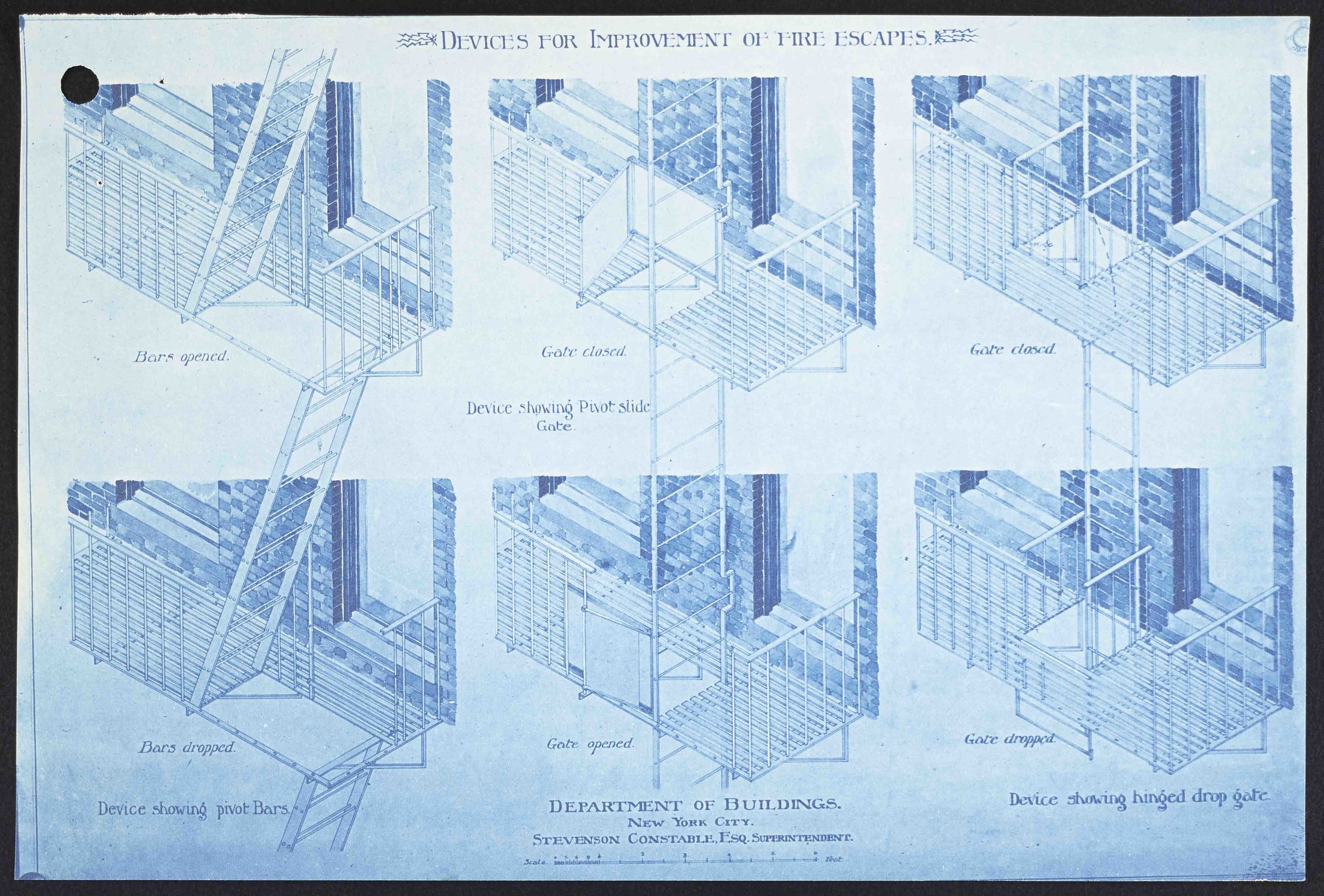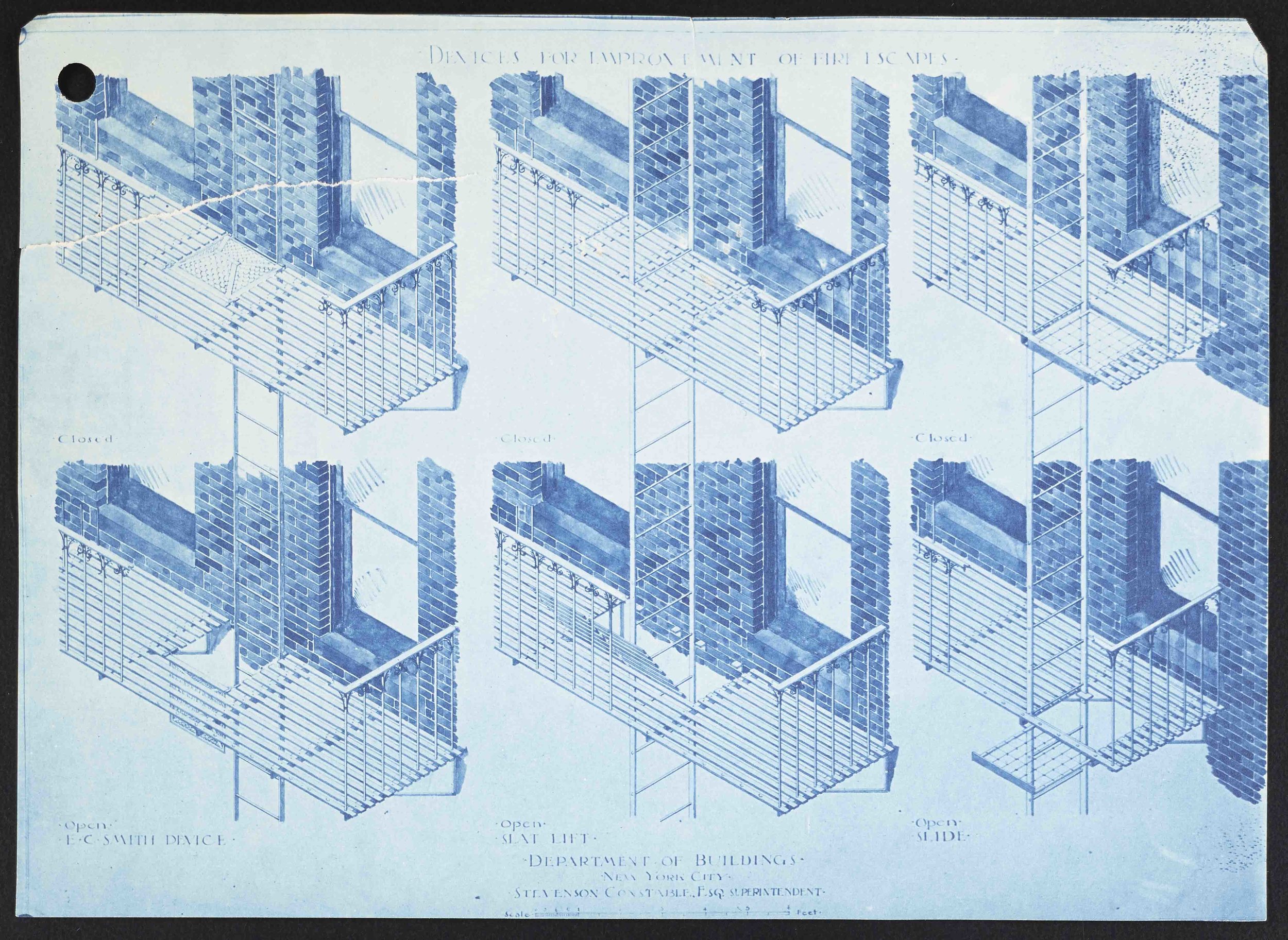Municipal Archives Collection, Tenement House Department
This is the image that we all conjure when thinking of New York City’s fire escapes. The omnipresent metal staircases hanging on buildings throughout the Boroughs. In 1860, after a terrible fire killed ten women and children, New York State authorized New York City (Manhattan only since this was pre-consolidation) to create laws that safeguarded residents of tenements housing more than eight families. Early fire escapes included tubes, something akin to those emergency devices on airplanes, for people to jump through. Some buildings had scuttles that allowed residents to scurry to the roof in case of a fire but getting from the roof proved challenging. In short order the basic metal stairway design still adorning many buildings emerged.
In 1862, the Board of Alderman passed an updated “act to provide for the regulation and inspection of Buildings, the more effectual prevention of fires and the better preservation of life and property in the City of New York.” In his annual report, the Buildings Department Commissioner wrote the 1862 Act was effective because it was retroactive; it allowed building inspectors to require fire escapes on all existing structures, not just proposed new construction.
Characterizing the tenement house system as a process “by which the greatest amount of profit is sought to be realized from the least possible amount of space, with little or no regard for the health, comfort, or protection of the lives of the tenants,” the report lamented the poor construction and questionable building materials of many tenements. It stated that five hundred and fifty six buildings were required to install fire escapes and “the owners in 386 cases have cheerfully complied with all requirements of the law.” The report also took issue with poorly constructed fire escapes and mentioned two escape systems that possessed excellent features; one invented by J.W. Mackenzie and the other by a Mr. Shute.
Office of the Mayor, Early Mayor Records, Series XXX: William Strong, 1895-1897
Nevertheless, despite the retrospective law and the tough enforcement, by 1897 Buildings Commissioner Stevenson Constable noted that the fire escapes were being put to uses not connected to exiting from a burning building. In a letter to Mayor William L. Strong, he bemoaned the great loss of life from people falling from the safety stairs. Proposing additional safeguards, he enclosed several small blueprints of proposed designs for safer fire escapes.
Changes to the building code in 1968 focused on fire prevention—using sprinklers and interior stairways—rather than the metal outdoor escape route. But the ubiquitous fire escape, still evident on thousands of pre-1968 buildings, is a testament to forward thinking and inventive bureaucrats and legislators of more than a century ago.
